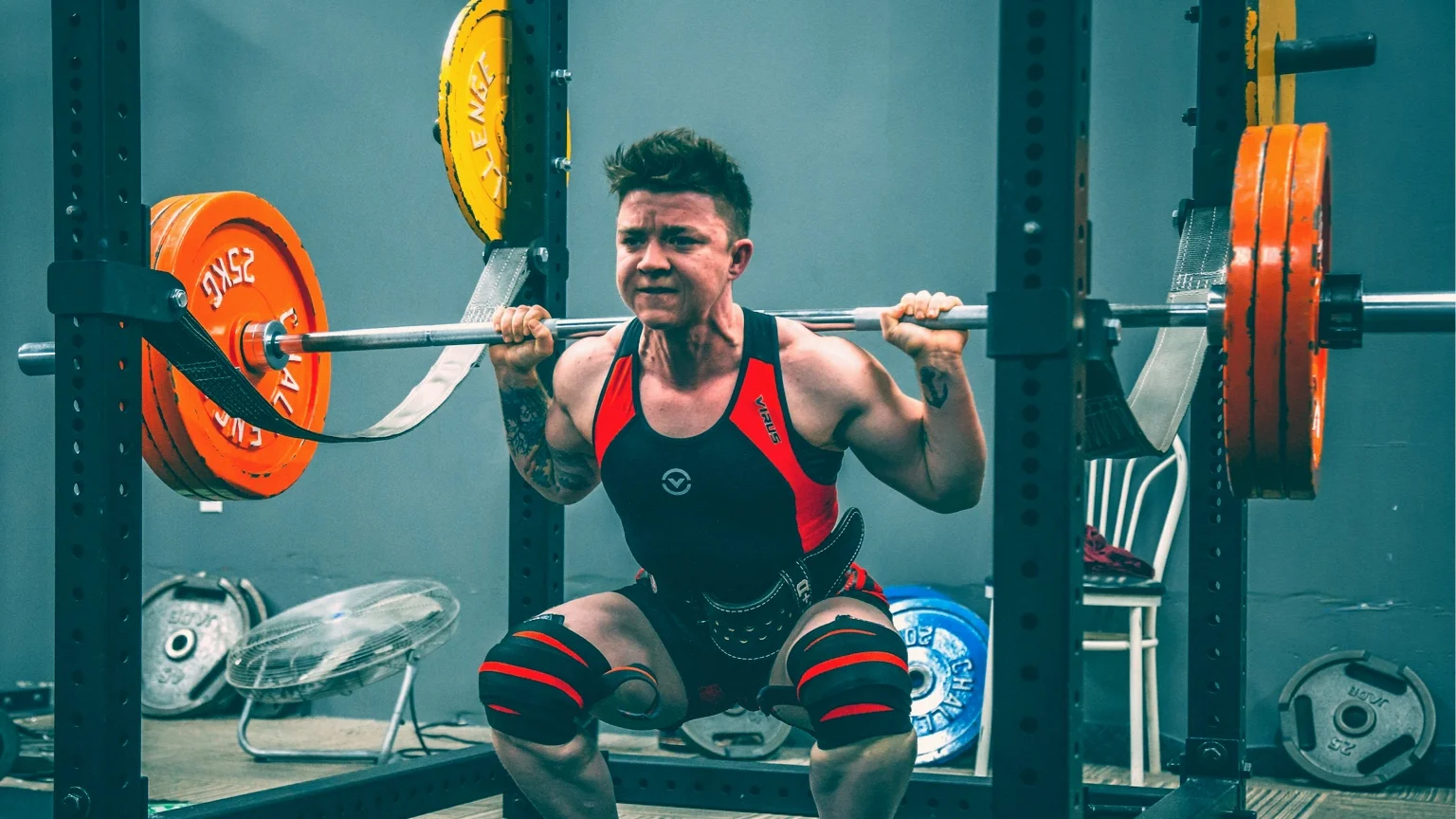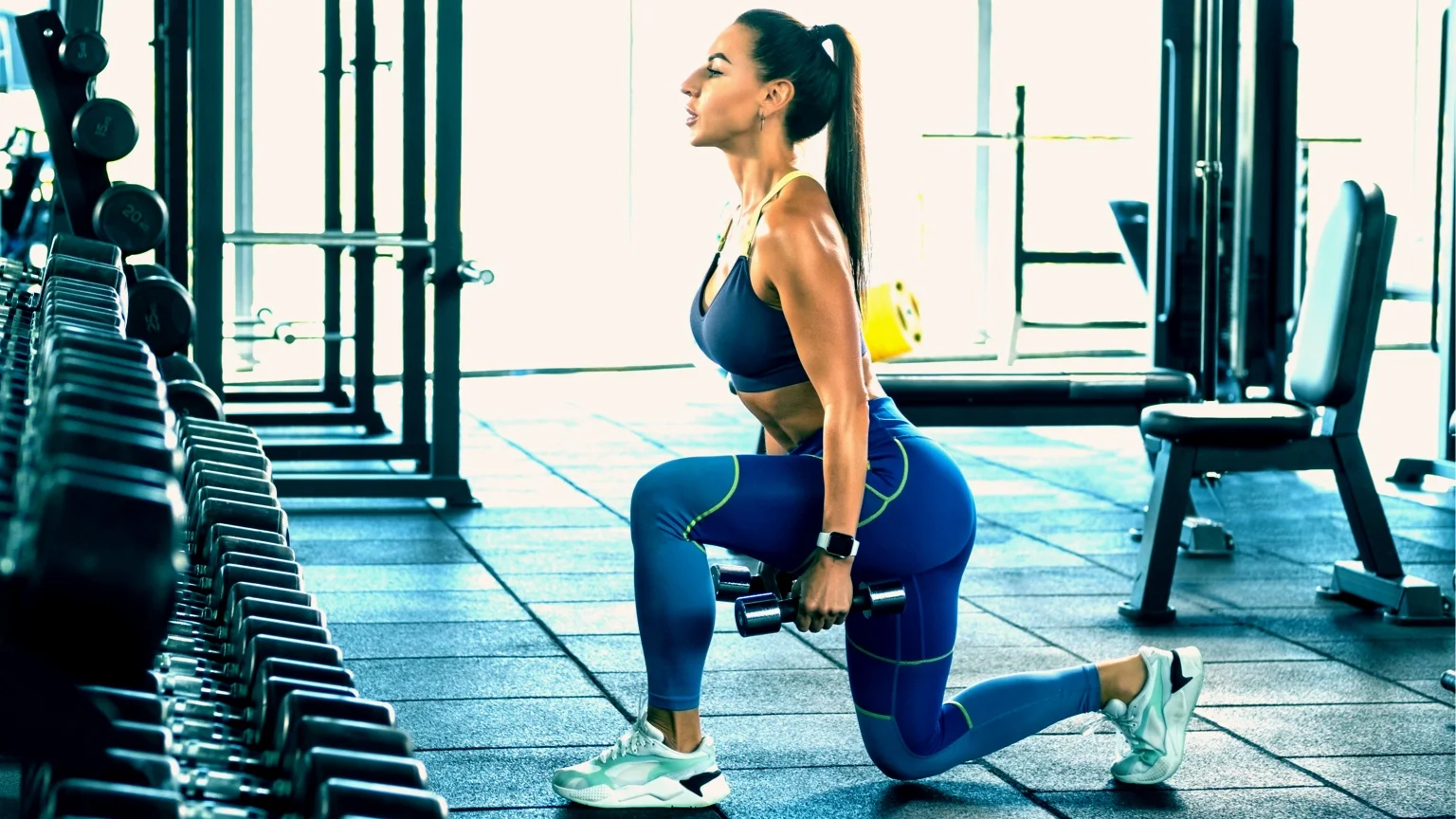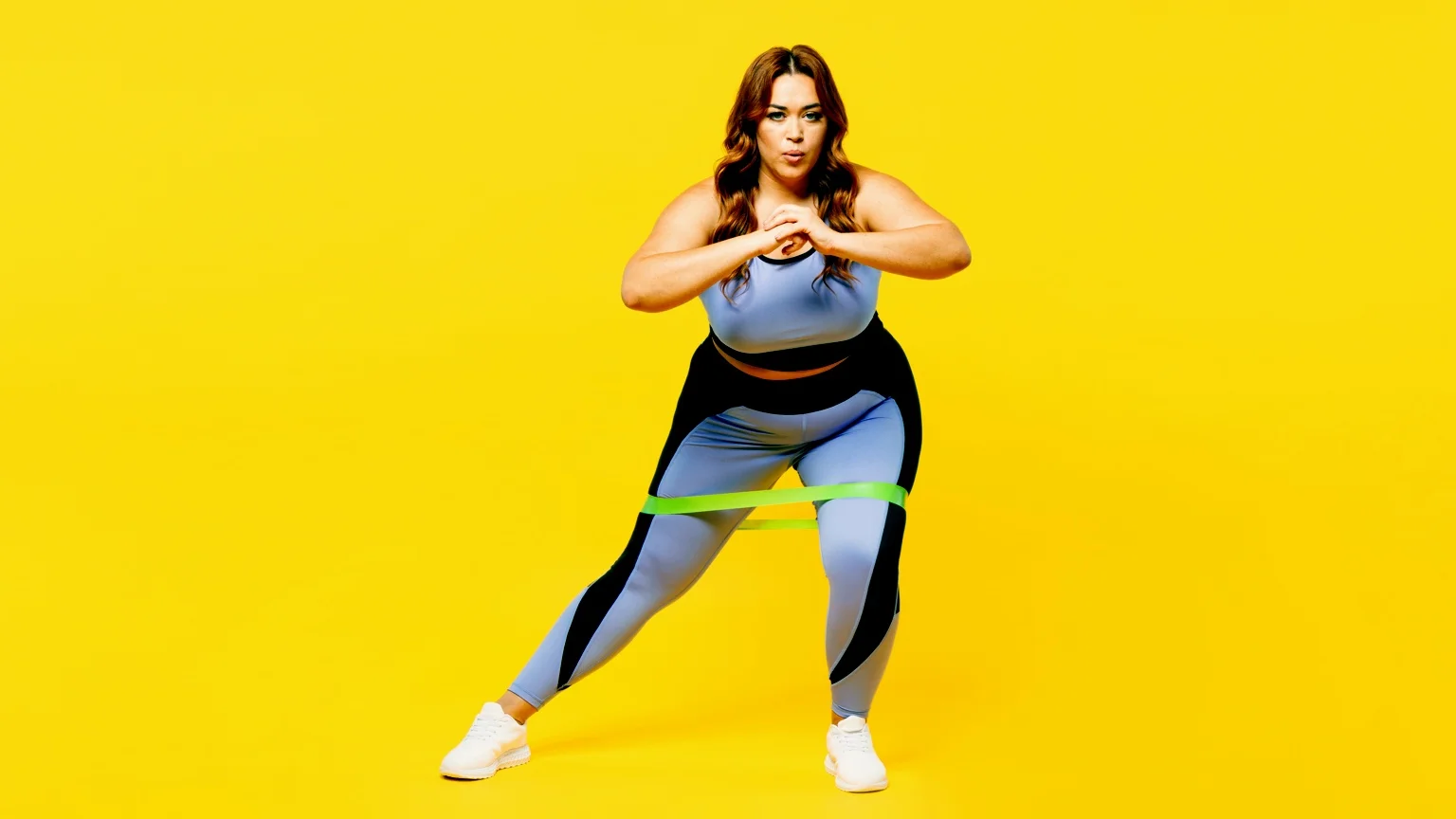Find the Best Workout Routine For You

How often should I workout?
How often you workout depends on your fitness goals. It is important to choose a workout routine that you can stick with – consistency is key!
To build muscle, realistically you need to workout a minimum of 2 days per week. If you workout only 2 days per week, you would typically do full-body workouts on both days.
But if you want more growth, then 3-5 days per week is optimal. This allows you to work specific muscle groups through the week, and provides adequate time for rest and recovery.
If you are just starting, we recommend you start with 2-4 workout sessions per week, but the most effective workout routine is probably a 4 day split for most people. A typical 4 day split sees you dedicate days to upper body, lower body, shoulders and legs.
The 4 day split provides a good balance of exercise frequency and volume, working all muscle groups through the week and providing enough rest between exercises. It is suitable for both beginners and experienced lifters.
Read more: 3 vs 4 vs 5 vs 7 Day Split: What workout routine is best for you?
Workout routine structure
In general, there a 4 kinds of workout routine you can choose:
- Bro split – In a bro split, you work each muscle group once per week. Each day of your split is dedicated to a specific muscle group, providing a large amount of recovery time between exercises.
- Upper/lower split – Upper/lower routines split workouts between upper body and lower body exercises, alternating on each day of your routine.
- Push/pull/legs (PPL) split – A PPL routine splits your workout days into push days and pull days, with an extra day dedicated solely to your leg exercises.
- Full-body workout – Full body workouts hit every major muscle group in a single session. Due to required rest days, this is more common in 2-3 days per week training routines.
Training frequency
A key concept in workout routines is that of training frequency. Training frequency is the number of times you work a muscle group over the week.
Higher training frequency has proven beneficial if your goal is to gain lean muscle mass efficiently. Each time you work a muscle group, you are stimulating the muscle, which leads to protein synthesis and therefore grows your muscle. Studies show that the protein synthesis process peaks 24 hours after you exercise and returns to normal after about 36 hours (pdf).
For optimal muscle growth, you may choose to work each muscle group 2-3 times per week. This allows for maximal stimulus of your muscles, but it’s important to ensure sufficient rest and recovery periods between your exercises.
Split routines are more popular than full-body workouts because they allow you to get a higher training frequency in your routine. This is because they work specific muscle groups of designated days, allowing you to alternate between different parts of your body without overtraining.
Full-body workout routines may be more appropriate for beginners, and you can see impressive results in the initial training stages. But, as your strength and endurance improves, you will find it difficult to sustain a full-body workout because of the rest and recovery time needed.
When structuring your workout routine, include enough time to recovery between your workout sessions. Avoid working chest and shoulders, or legs and back, on consecutive days of your routine. For example, if you followed a 5 day split, you may choose to work chest on Mondays and shoulders on Thursdays, with legs on Tuesdays and back on Fridays. This will give you 3 days of rest between each session. This rest and recovery time is essentially for muscle growth, and also helps prevent injury to your body.
You should let each muscle group rest for at least 48 hours before you work it again.
Volume and intensity
For each muscle group, ensure you are including enough intensity, volume and frequency in your routine. This will enhance the effectiveness of your routine and promote quicker progressive overload (gradually increasing the reps and weight/resistance of your exercises).
Volume is the total amount of work you do during an exercise. You can think of it as the number of sets multiplied by the number of reps multiplied by the weight lifted in each exercise.
Intensity is the amount of weight or resistance applied during an exercise. Typically this is expressed as a percentage of your one-rep maximum (1RM).
The now-accepted understanding is that volume and intensity are more important than frequency when it comes to a training routine. So think about how this is reflected in your workout routine through the week.
Your weekly workout routine should include all major muscle groups, with exercises chosen to promote balanced growth in strength and size. Because volume is most important, if you are lifting heavier weights you can reduce the number of reps, and still hit the same volume. Your muscles may need more time to recover when you lift heavier.
Exercises
You will want to choose the exercises in your workout routine carefully. Aim for a variety of exercises that target different areas. If your goal is muscle growth, then heavy compound exercises are key – think bench press, squats and deadlifts. These all hit multiple muscle groups and joints, which stimulates overall muscle growth and strength.
Here’s some example exercises for different muscle groups:
- Upper body – push-ups, bench press
- Lower body – squats, lunges
- Back: deadlifts, rows
- Shoulders: overhead press
- Core: crunches, planks
It’s important to do all exercises with the proper form, so start with a comfortable weight and increase gradually over time. This will prevent injury, which allowing steady progression.
Don’t overdo it with high rep, isolation exercises like bicep curls or calf raises. These are good exercises, but there is a risk of overtraining. Since they are isolation exercises, they may not contribute much to overall strength, but they can be useful to target sppecific muscles.
3 day workout routine
A 3 day workout routine is a flexible routine that fits into most people’s schedules. A typical 3 day workout routine is the push-pull-legs routine:
- Monday – Push – Upper body exercises targeting the chest, shoulders and triceps. Exercises may include bench press, overhead press and dips.
- Wednesday – Pull – Back and biceps exercises, including pull-ups, rows and deadlifts.
- Friday – Leg – Your leg day may include squats, lunges, calf raises.
Allow one day of rest between each workout day – this is crucial for optimal muscle growth and recovery.
You may also consider 2 days of rest between your pull and leg day. If you do deadlifts on pull day, this will work your hamstrings, which will inevitably impact you on the subsequent leg day. So an extra day of rest can help.
Another popular 3 day workout routine is:
- Monday – Chest/Triceps – Including bench press, push-ups, cable flys, tricep pushdowns, overhead tricep extensions and close-grip bench press.
- Wednesday – Back/Biceps – Including pull-ups, bent-over rows, deadlifts, hammer curls, barbell curls, concentration curls.
- Friday – Legs/Shoulders – Including squats, lunges, calf raises, military presses, lateral raises and front raises.
Check out Gym Geek’s 3 day workout routines:
4 day workout routine
A 4 day workout split is optimal if your goal is to build lean body mass quickly and sustainably. Each day focuses on a different body part:
- Monday – Chest/Triceps
- Tuesday – Back/Biceps
- Thursday – Shoulders
- Friday – Legs
5 day workout routine
There are two popular 5 day workout split routines, the bro split and upper-lower, push-pull-legs (ULPPL) split. Both are effective, high-volume routines. They key decider will be your personal preference.
The 5 day bro split, which sees you work a specific muscle group (chest, back, legs, arms and shoulders) on each day of the week.
The 5 day upper-lower, push-pull-legs (ULPPL) split divides your workouts into upper body, lower body, push days, pull days and a separate day for your leg exercises. The key advantage here over the bro split is increased training frequency, since you can hit the a muscle group multiple times in the same week.
Example 5 day split:
- Monday – Chest
- Tuesday – Shoulders
- Wednesday – Legs
- Thursday – Back
- Friday – Arms
Each workout lasts approx 45 minutes, with a good balance of warm ups, intense exercise and cool down periods.
5 day workout splits are a great choice if you are able to hit the gym during the weekdays, leaving your weekends free for other activities.
Check out Gym Geek’s 5 day workout routines:
Workout recovery
Adequate rest and recovery is an important part of any workout routine. Recovery can be passive or active.
Active recovery uses low-intensity activities like walking, yoga and swimming, to help you recover after an intense workout. Recovery minimizes your fatigue, reduces muscle soreness and is key for muscle growth.
Cardio
Including some cardio in your regular fitness regime is recommended. The Physical Activity Guidelines recommend that healthy adults do at least 150 minutes of moderate aerobic activity or 75 minutes of vigorous aerobic activity each week.

Strength training builds muscle mass, increases metabolic rate and increase bone density. Cardio completes this by promoting heart health, helping with weight loss and weight management and improves you overall fitness level.
We recommend you include 20-40 minute cardio sessions into your workout routine. This should be sufficient to get the benefits of cardio without compromising weightlifting ability.
You can do cardio and strength training on the same or different days. It depends entirely on your personal preferences.
If your goal is weight loss, your focus should be on burning calories. Cardio exercises are a great way to increase your calorie burn. Running, swimming and cycling burn a lot of calories in a short workout.
Nutrition
A balanced diet is a crucial part of your workout routine. Aim for a balanced diet rich in fruits, vegetables, lean proteins and whole grains. These foods provide essential nutrients without excess calories. Reduce your intake of processed foods, sugary sodas and unhealthy fats.
You can use a basal metabolic rate (BMR) calculator to get an idea your daily calorie burn at rest. This estimate is based on your age, gender weight and height. To maintain weight, eat at your BMR and to lose weight, eat less calories than your BMR. You should consult a doctor or medical practitioner before you start any weight loss regime.
You may wish to create a meal plan for each day of the week. A typical day may look something like this:
- Breakfast - high in protein foods, such as scrambled eggs with veggies, with whole-grain toast.
- Mid-morning snack - fruit, for example a banana or apple
- Lunch - lean protein meal, for example grilled chicken with salad and a portion of whole grains
- Afternoon snack - a handful of nuts with yogurt
- Dinner - fish/tofu with steamed vegetables and brown rice
References
MacDougall, J. D., Gibala, M. J., Tarnopolsky, M. A., MacDonald, J. R., Interisano, S. A., & Yarasheski, K. E. (1995). The time course for elevated muscle protein synthesis following heavy resistance exercise. Canadian Journal of applied physiology, 20(4), 480-486.
Schoenfeld, B. J., Ogborn, D., & Krieger, J. W. (2017). Dose-response relationship between weekly resistance training volume and increases in muscle mass: A systematic review and meta-analysis. Journal of sports sciences, 35(11), 1073-1082.
Piercy, K. L., Troiano, R. P., Ballard, R. M., Carlson, S. A., Fulton, J. E., Galuska, D. A., ... & Olson, R. D. (2018). The physical activity guidelines for Americans. Jama, 320(19), 2020-2028.



























